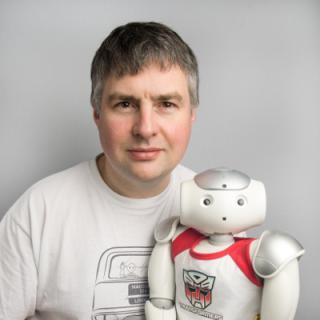Presentation: Neural Networks Across Space and Time
Share this on:
What You’ll Learn
- Hear what neural networks are and what types of deep learning networks are out there.
- Learn how to decide if your solution needs a convolutional network or a recurrent one.
- Find out what some of the DL resources are out there and see how some are used.
Abstract
This is an intro-level talk on deep learning. We’ll start with a brief introduction to deep neural networks, why they are important and how they work. The talk will then cover two of the most important deep neural architectures: convolutional networks which excel at handling images and recurrent networks which handle time-series or sequential input (such as text). We'll show examples of both convolutional and recurrent networks using the deeplearning4j framework.
What is the focus of your work today?
I’m one of the lead developers of the management layer for Horizon Cloud; VMware’s cloud-hosted virtual desktop product
What’s the motivation for this talk?
Andre Karpathy has described neural networks as "Software 2.0" Even if he's overestimating, machine learning is only going to get more important. Developers wanting to stay ahead should at least gain a basic understanding of what's involved and how it can be used.
How you you describe the persona and level of the target audience?
A developer who's heard some of the hype about deep learning and wants to know what deep learning actually is. No prior knowledge of machine learning is assumed.
What do you want this persona to walk away from your talk knowing that they might not have known 50 minutes before?
A basic understanding of what a neural network is and how it works. The two predominant deep network architectures today, what they are used for and how to build them.
This talk is in the Java track. Do you think this talk would be interesting to non-java developers as well?
Yes, because although I'm going to use Java examples, a lot of frameworks out there have broadly similar primitives.
Last Year's Tracks
Monday, 5 March
-
Leading Edge Backend Languages
Code the future! How cutting-edge programming languages and their more-established forerunners can help solve today and tomorrow’s server-side technical problems.
-
Security: Red XOR Blue Team
Security from the defender's AND the attacker's point of view
-
Microservices/ Serverless: Patterns and Practices
Stories of success and failure building modern service and function-based applications, including event sourcing, reactive, decomposition, & more.
-
Stream Processing in the Modern Age
Compelling applications of stream processing & recent advances in the field
-
DevEx: The Next Evolution of DevOps
Removing friction from the developer experience.
-
Modern CS in the Real World
Applied trends in Computer Science that are likely to affect Software Engineers today.
-
Speaker AMAs (Ask Me Anything)
Tuesday, 6 March
-
Next Gen Banking: It’s not all Blockchains and ICOs
Great technologies like Blockchain, smartphones and biometrics must not be limited to just faster banking, but better banking.
-
Observability: Logging, Alerting and Tracing
Observability in modern large distributed computer systems
-
Building Great Engineering Cultures & Organizations
Stories of cultural change in organizations
-
Architectures You've Always Wondered About
Topics like next-gen architecture mixed with applied use cases found in today's large-scale systems, self-driving cars, network routing, scale, robotics, cloud deployments, and more.
-
The Practice & Frontiers of AI
Learn about machine learning in practice and on the horizon
-
JavaScript and Beyond: The Future of the Frontend
Exploring the great frontend frameworks that make JavaScript so popular and theg JavaScript-based languages revolutionising frontend development.
-
Speaker AMAs (Ask Me Anything)
Wednesday, 7 March
-
Distributed Stateful Systems
Architecting and leveraging NoSQL revisitied
-
Operating Systems: LinuxKit, Unikernels, & Beyond
Applied, practical, & real-world deep-dive into industry adoption of OS, containers and virtualisation, including Linux on Windows, LinuxKit, and Unikernels
-
Architecting for Failure
If you're not architecting for failure you're heading for failure
-
Evolving Java and the JVM: Mobile, Micro and Modular
Although the Java language is holding strong as a developer favourite, new languages and paradigms are being embraced on JVM.
-
Tech Ethics in Action
Learning from the experiences of real-world companies driving technology decisions from ethics as much as technology.
-
Bare Knuckle Performance
Killing latency and getting the most out of your hardware
-
Speaker AMAs (Ask Me Anything)

